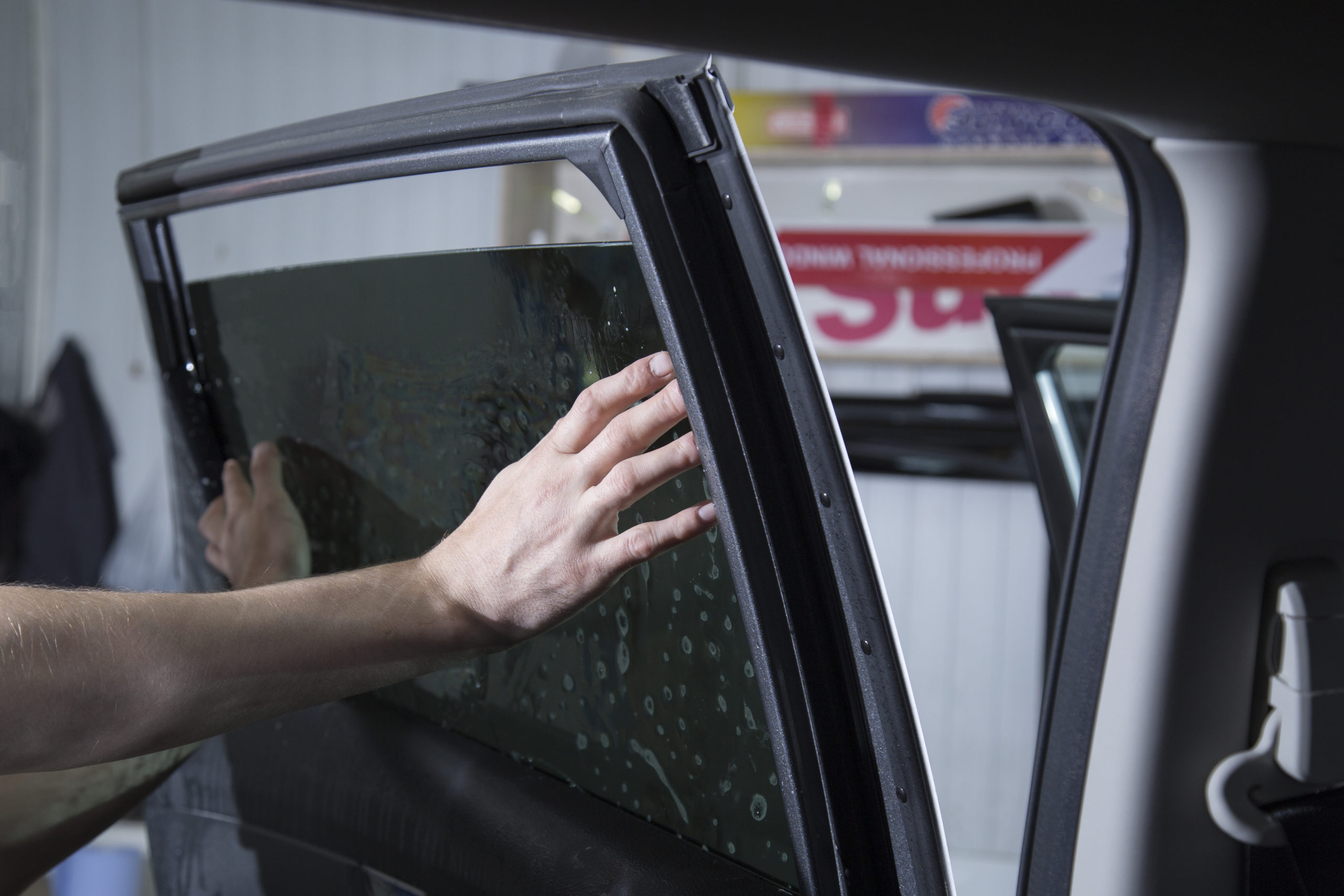Window Tinting Options: Find the Right Shade for Your Style and Needs
Selecting the ideal window tint for your vehicle involves a careful consideration of different variables, consisting of individual appearances, practical requirements, and lawful limitations. With alternatives ranging from light tintss that use minimal privacy to darker tones that boost privacy, the selections can be overwhelming.
Comprehending Window Tinting Levels
When thinking about window tinting, it is vital to comprehend the various degrees of tint offered, as they significantly affect both appearances and capability. Window tinting is classified based on Noticeable Light Transmission (VLT) percentages, which indicate the quantity of light permitted to pass via the glass. The VLT percent can vary from really light (over 70%) to very dark (below 5%)
The main levels of tint consist of clear, which offers UV security without modifying exposure; light tint (over 50% VLT), which slightly lowers glow while maintaining visibility; medium tint (around 35% VLT), striking an equilibrium in between privacy and light transmission; and dark tint (below 20% VLT), offering substantial personal privacy and warm decrease but restricting exterior visibility.
Recognizing these levels is important as they can influence driving safety and security, lawful compliance, and personal convenience. Furthermore, regional policies frequently dictate allowable tint degrees, differing by state or municipality. Prior to selecting a color, it is a good idea to study and make certain adherence to these laws while thinking about personal preferences for style and practical advantages.
Popular Tint Shades Explained

One of one of the most popular alternatives is the classic dark tint, typically ranging from 20% to 5% VLT (Noticeable Light Transmission) This shade offers optimum personal privacy and a sleek, sophisticated appearance. It effectively obstructs UV rays and warm, making it optimal for bright climates, though it may restrict exposure in the evening.
Conversely, lighter shades such as 35% or 50% VLT offer a much more refined look while still providing some level of privacy. These tones are ideal for those seeking an equilibrium in between aesthetic appeals and performance, as they enable for far better exposure and adhere to different lawful standards.
An additional emerging preference is the ceramic tint, which can can be found in a range of shades - window tinting. It offers superior warm denial and UV protection without dramatically altering the automobile's appearance

Lawful Laws for Window Tinting
Recognizing the legal laws surrounding window tinting is essential for car proprietors looking to tailor their autos. Each state in the united state has specific laws governing the darkness or lightness of window tintss, often measured by Visible Light Transmission (VLT) portion. VLT refers to the quantity of light that can go through the movie and the glass incorporated.
In many states, laws determine various VLT percentages for different windowss, consisting of front windscreens, side windowss, and rear windowss. Some states might allow a tint of 70% VLT for windshields while permitting darker tintss for back windowss. Furthermore, particular states have restrictions on reflective tintss, which can produce glow for other motorists.
Failure to abide by these policies can lead to penalties, mandated removal of the tint, and enhanced insurance coverage premiums. Vehicle owners ought to get in touch with local regulations or state DMV web sites to ensure they are within legal restrictions before continuing with setup. Comprehending these guidelines not only aids stay clear of lawful consequences however likewise guarantees a safe driving experience.
Benefits of Different Tint Products
Discovering the benefits of various tint materials reveals considerable advantages that can improve both the functionality and aesthetic charm of an automobile. Each product provides distinctive characteristics matched to particular demands and choices.
Dyeded window films are popular for their cost and capacity to lower glare. They properly block UV rays, securing the helpful resources interior from fading, though they may not supply the highest warmth denial. Metalized films, on the various other hand, deal remarkable warm decrease and UV protection because of their reflective residential or commercial properties. They can boost personal privacy and safety but might hinder electronic signals.
Ceramic window films stand for a premium choice, giving phenomenal warmth being rejected while maintaining exposure. They are non-metallic, therefore preventing any type of signal interruption, and are extremely sturdy, withstanding scratches and fading with time. Furthermore, ceramic films do not contain dyes, ensuring a longer-lasting look.
Finally, crossbreed films incorporate components from dyeded and metalized options, providing a well balanced efficiency in regards to warm rejection, glow decrease, and expense. Each tint product serves one-of-a-kind purposes, permitting vehicle owners to pick the most effective fit for their way of living and aesthetic preferences, inevitably enhancing their driving experience.
Picking the Right Tint for You
Locating the right window tint entails thinking about different variables, including individual preferences, lorry type, and local laws. First, evaluate your personal style and desired level of personal privacy, as these will lead your selection of tint shade. Darker tintss provide enhanced privacy but may not appropriate for all drivers, particularly those that prefer an even more open feeling inside their lorry.
Following, consider your car kind, as the size and shape of windowss can affect the efficiency of certain tintss. Larger windowss may benefit from reflective tintss that decrease glare while smaller windowss could be more matched to dyeded films that supply subtle aesthetics.
In addition, it's critical to inspect local guidelines pertaining to window tinting. Several states impose constraints on the allowable darkness and reflectivity, specifically for front windowss. Conformity with these laws is vital to ensure and stay clear of penalties safety.
Finally, assess the tint product that ideal matches your demands. Choices consist of dyeded, metalized, ceramic, and crossbreed films, each offering distinct advantages associating to warm being rejected, UV protection, and longevity. By thinking about these elements, you can confidently pick a home window tint that aligns with your design and functional requirements.
Conclusion
To conclude, picking the ideal window tint calls for careful consideration of various elements, consisting of VLT percents, regional laws, and the preferred visual. Different tint materials provide their website one-of-a-kind advantages that can improve car convenience and protection. By thoroughly comprehending the offered options and aligning them with individual preferences and functional requirements, one can achieve an optimal balance in between design and functionality in window tinting choices.
Picking the suitable window tint for your vehicle involves a careful factor to consider of numerous aspects, consisting of individual visual appeals, functional needs, and lawful constraints. Each state in Get More Info the U.S. has particular regulations regulating the darkness or lightness of window tintss, usually gauged by Visible Light Transmission (VLT) percentage. Some states might permit a tint of 70% VLT for windscreens while allowing darker tintss for back windowss.Locating the right window tint entails taking into consideration numerous factors, including personal preferences, automobile type, and neighborhood laws.In verdict, selecting the suitable window tint calls for mindful factor to consider of numerous aspects, consisting of VLT percents, neighborhood laws, and the wanted visual.
 Amanda Bynes Then & Now!
Amanda Bynes Then & Now! Devin Ratray Then & Now!
Devin Ratray Then & Now! Destiny’s Child Then & Now!
Destiny’s Child Then & Now! Morgan Fairchild Then & Now!
Morgan Fairchild Then & Now! Ryan Phillippe Then & Now!
Ryan Phillippe Then & Now!